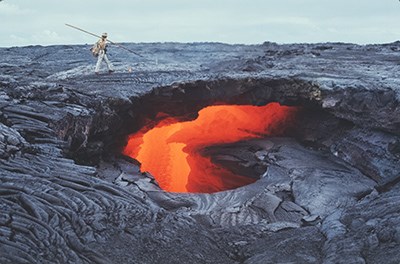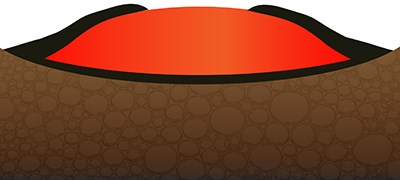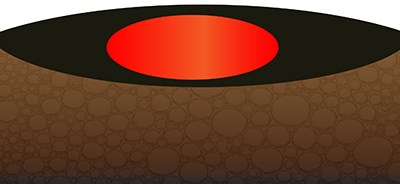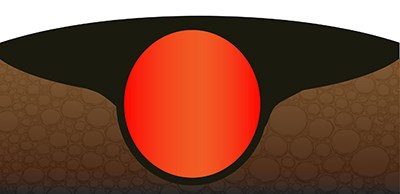

When a lava tube is active, lava travels along its floor at temperatures that exceed 2,000º F (1090º C). Winds of superheated fume may blast through the tunnel, yet the only sound may be the constant soft hiss of the relentless flow. Once lava subsides, these subterranean corridors become home to unique ecosystems of troglobites, animals specifically adapted to live in this dark isolated world. Distinct species of crickets and spiders develop alongside special microbial colonies found nowhere else. The Kazumura lava tube system, within the 500 year-old ‘Ailā‘au lava flow of Kīlauea, is more than 40 miles (65 km) long and is thought to be the longest lava tube cave in the world. Tubes may be up to several dozen feet wide. How Do Lava Tubes Form?
1. Large rivers of lava flow in natural channels of their own creation. Fast central currents keep the core hot, while the slower moving edges cool and thicken as they are exposed to cooler surface air. As the surface cools, the top of the flow crusts over from the sides, like the way ice freezes on a river. 
2. The crust eventually joins completely and insulates an interior flow. When fully insulated, the flow becomes superheated. 
3. The superheated lava flow then begins “downcutting” through the ground or lava flows beneath it, in a process known as thermal erosion. This results in a deeper, narrower cross-section. 
4. When the eruption stops, lava often drains from the tube and leaves behind the vacated conduit beneath the surface. Dripping formations may begin to develop as the lava level subsides. It may take about a year for the tube to cool down, but soon the new underground passage will be colonized by insects, spiders and their cave-dwelling kin. Cultural SignificanceFor Native Hawaiians, these caves have also had great cultural importance. They could be used as shelter from both the elements and human enemies. Food stored in the cooler, more thermally stable lava tubes would last longer. Middens within lava tubes have contained ʻopihi shells, stone tools and other evidence of daily life, testifying to their usage. |
Last updated: March 16, 2021
